My great grandparents, Edward Ernest Hill and Mary Gertrude Hill (nee Day) were early Bridgetown pioneers. They lived together with Emma Jane Day (my 2nd Great Grand mother) and Millicent Day (my 2nd great Aunt) at Sunnyhurst in Bridgetown and together ran the family business called E. Day & Co.
You can read more about Bridgetown History, the Hill Family and Sunnyhurst here.
The Day family were originally from Mount Gambier in South Australia and migrated to Western Australia in the late 1890’s. The following is a collection of information I’ve learnt about my Day family history.
This page is updated as I find new information and was last updated 7 May, 2018.
Emma Jane Day
Much of the family’s Bridgetown history I’ve read focuses on Ern Hill however Ern’s mother-in-law, Emma Jane Day, and her family were a crucial part. Emma Jane Day, her daughter Millicent were business partners in E. Day and Co company; and some of her children were influential in other locations in Western Australia.
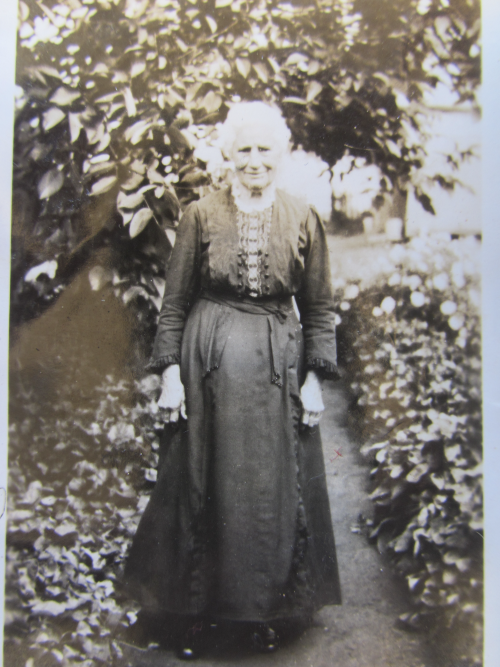
Early Life
Emma Jane Day (nee Gardener) was born on 7 Feb, 1848 in Meerut, Bengal, India.
Her father John Gardener had enlisted in the 17th Royal Lancers and volunteered from that regiment into the 9th Royal Lancers. John served in India engaged in battles of Punnier, Sobraon, Goojerat where he obtained a star and silver medal for distinguished bravery.
Her father John married Mary, a widower with a child, in Cawnpore, Bengal, India on 10 Oct, 1844 when John was 24 and Mary was 31. Mary’s child, Mary Maria whose father was William Cousins was born in 1843, was 5 years older than Emma.
The family returned to England where John was promoted to the rank of Lieutenant and Quarter Master transferring into Her Majesty’s 3rd Rifles after which he left the service and the family, excluding Emma Jane, immigrated to Australia arriving on the ship General Hewitt at Portland, Victoria in 1856 and moved to Mount Gambier in 1862. Emma was 8 when the rest of her family immigrated to Australia and she remained in England for her schooling and immigrated to Australia in 1862 when she was 15 on Shackamaxon.
The Shackamaxon left Liverpool on December 23, 1861 with 364 immigrants and arrived on March 16, 1862 into Melbourne, Victoria. The ship experienced fine weather through the passage and no deaths occurred. Most secured their passage under the immigration remittance system. The ship carried mostly females. There were 24 married couples, 268 single women, 1 single man and 29 children from 1 to 12 years.
The Shackaxon, Captain Toulan, was a Black Ball ship of 947 tons.
John Gardener worked as the Secretary and Librarian for the Mount Gambier Institute. John Gardener died on 29 June,1869 when he was 49 as a result of an inflammation of the brain. He was buried in the new Mount Gambier Cemetery (Lake Terrace Cemetery). Emma was 21 when her father died.
Marriage and children
Emma Jane married Charles Day (aka Carl Day) in May, 1868 at Christchurch in Mount Gambier when she was 20 and they had 9 children:
- Charles George (George) (aka Charles Davis – Victoria) b 3 Sept, 1867 d 1953
- William John (John) b 1869 d 1944
- Joseph Henry Day b 1872
- Mary Daisy Lillian (Mary) b 12 June, 1873 m Wilde
- Millicent Mary Day b April 21, 1875 d Oct 13, 1936
- Maud Brittania b 1876 died at 5 months
- Mary Gertrude (Molly) b 1877 d 1955 m Hill
- Leonard Mitchell (Sydney, NSW) b 19 Feb 1880 d 1953
- Efflie Louisa Myrtle b 1882 died at 7 months
The family was originally from OB Flat near Mount Gambier, South Australia and Days Hill in South Australia, on section 92, Hundred of Blanche, remembers Emma Jane Day, ‘wife of Carl Day, O.B. Flat’, who purchased the land from Alexander McLean on 29 April 1874.
The early years were tough on the family. Carl Day struggled with illness and was unable to work. He was charged several times for failing to send some of the children to school.
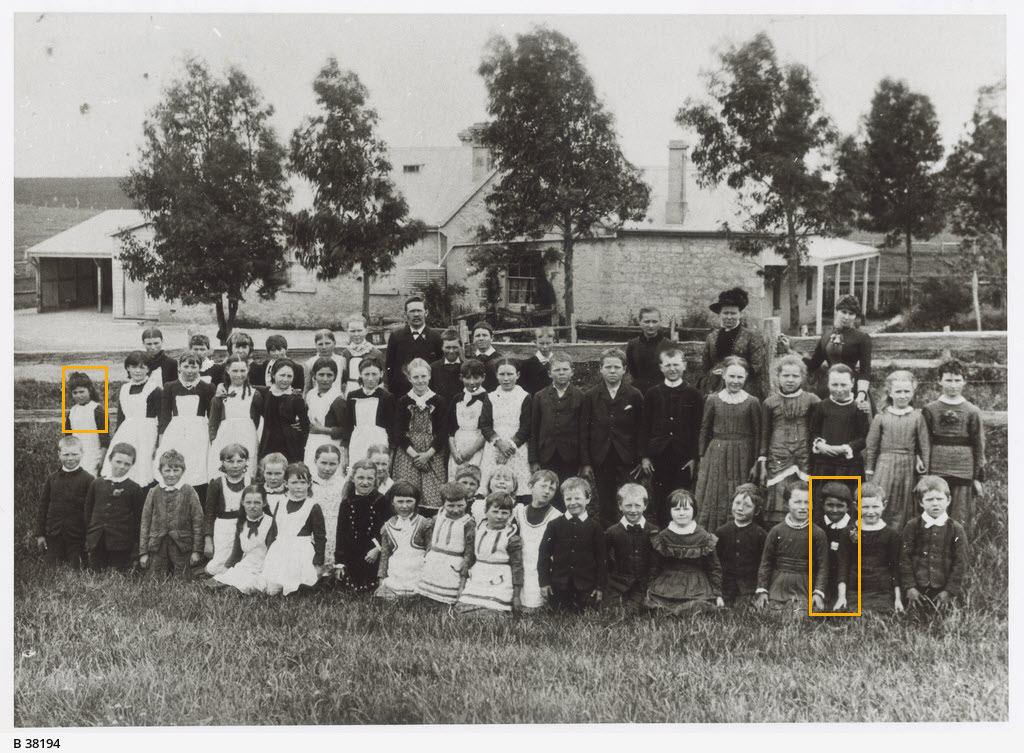
The photo of Square Mile Public school students is from State Library of South Australia, B 38194 and is dated ~1905. This same photo was found in photos from one of our relatives and is dated 1890. The photo also included a list of the student names which I’ve uploaded. I’ve highlighted the students I believe are Molly (Mary Day) and Len Day.

According to Ross Henry Day’s “Albany Days: A Family history” the children attended one or both of the two schools near their home – O.B Flat School and Square Mile Public School.
- George and W.J Day left school to learn trades and went to night school.
- Henry was kept out of school in 1882 when he was 10 and in 1884 when he was 13. Both Henry and Emma Jane had to work in 1882 as Carl hadn’t been able to work for 8 months due to illness.
- Millicent was kept out of school in 1884 when she was 9 to help care for the younger children.
Emma and Carl’s house in OB Flat was destroyed by fire in March, 1887. The house wasn’t insured and the loss was estimated at over £100. The local community donated goods and helped raise money to rebuild their house in April, 1887.
Carl died in 1894 of bronchitis and heart disease when he was 65.
Emma also faced challenges with her younger brother, Joseph Gardener. In July 1896 Emma’s brother Joseph Gardiner was charged with being deemed to be a lunatic.
Bridgetown years
Of the seven children that survived childhood, all of them married except for Millicent Mary Day and many of them immigrated from Mount Gambier to Western Australia.
Emma and her daughter Millicent lived at Sunnyhurst with Ern and her daughter Molly in Bridgetown, Western Australia.


Death
Emma Jane Day was 86 years and 3 months when she died at Sunnyhurst on 8 May, 1934. Her daughter Millicent died at 61 on Oct 13, 1936.
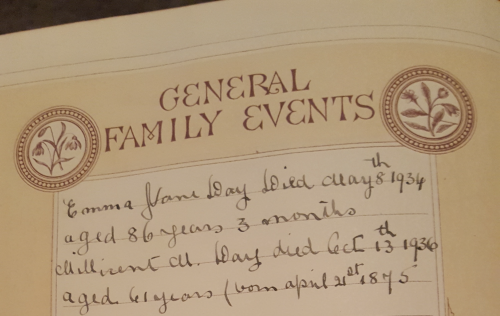
Below is her obituary from Blackwood Times on Friday May 13, 1934.
Late Emma J. Day.
Brief references was made in our last issue to the death of Mrs Emma J. Day in her 86th year. Known to her relatives and many friends as Grannie Day, deceased was born in Meerut, India, where her father, John Gardner, was an officer in the Indian Army. As a child she was sent to school in England and when 14 years old joined her parents, in the meantime, had removed to Australia. She married late Charles Day who was interested in mining on the Bendigo goldfields, work that was relinquished to reside in Mt Gambier, South Australia for 35 years. Four sons and five daughters were born, two of who died in early infancy. In 1897 Mrs. Day came on a visit to her son who had settled in Albany and following this visit a few months were spend in Bunbury. In 1898 she came to Bridgetown and immediately pinned her faith in the district, a faith that did not fail her for she saw the town grow and prosper. Often she was heard to remark, “I would not like to live elsewhere.”
In her quiet way Mrs Day was a great worker for charity and for about ten years a great deal of her time was given in making garments and rugs for the Parkerville Home and she never failed to “keep her birthday” by sending a parcel of new garments to the home. About 2 1/2 years ago her failing sight compelled her to relinquish this work. During the great war she was an outstanding worker for the Red Cross Society in providing comforts for the soldiers and went to a great deal of trouble in beading two pictures which netted a handsome sum for the funds of the society.
Older residents of the town and district will remember many years ago, during the serious illness of the medical office, the late Mrs Day gave a great deal of her time attending cases of sickness.
The remains were interred in the Anglican portion of the Bridgetown cemetery on May 9, when a large number of friends attended to pay their last respects, the service being conducted by Rev. Fred Davis. The pall bearers were Messrs H. and C. Blechynden, F. H Pearce and C.Hurst.
1934 ‘Obituary’, The Blackwood Times (Greenbushes, WA : 1905 – 1955), 18 May, p. 5. , viewed 13 Nov 2023, http://nla.gov.au/nla.news-article266783510
Carl Day
I haven’t found much information on Carl Day. He suffered ill health that affected his ability to work from at least July, 1881 and appeared to be ongoing until he died in 1894.
He died in Mount Gambier hospital of bronchitis and heart disease at 65 in Jan, 1894. According to his death notice he had suffered from illness for a long time.
His illness meant there was periods where the older children weren’t sent to school and either had to work or help care for the younger children so Emma Jane could work. Both George and W.J Day left school to learn trades and went to night school.
In June, 1882 Carl Day was charged with neglecting to send his son to school.
Carl Day, of O.B, flat was charged with having neglected to send his son Henry to school 35 days during the quarter ended March 31. He pleaded guilty, and said he had been under Dr. Jackson’s care since last July and was unable to do any hard work. The boy had been earning 6s. or 7s. a week. Both he and his mother had to go out working as he (defendant) could not work. He had two sons in the town learning trades, and they went to a night school. The boy Henry was ten years of age last birthday. Was sending him to school now, and purposed continuing to. do so. Case to stand over until next visit of the Inspector.
1882 ‘MOUNT GAMBIER POLICE COURT.’, Border Watch (Mount Gambier, SA : 1861 – 1954), 28 June, p. 2. , viewed 22 Jan 2017, http://nla.gov.au/nla.news-article77566814
Charles George Day
Charles George Day, known as George, was Emma Jane Day’s oldest son and born in 1867. He married Jane Keating in 1894 when he was 26 years old and had the following children:
- Lillian Gertrude b 1895 m Proctor
- George Henry b 1896
- Sydney b 1897
- William James 1899
He met up with W.J Day in Mount Gambier in 1939 and the two brothers hadn’t seen each other for 51 years. George served an apprenticeship with Fred Hammer, blacksmith, Mount Gambier.
He died on 22 February, 1953 in Royal Melbourne Hospital when he was 85. His death certificate records his name as Charles George Day, known as Charles George Davis, and that he lived for 45 years in Victoria, 20 years in Tasmania and 20 years in South Australia.
William John Day
William John Day (John) born in 1869 was Emma Jane Day’s second oldest son.
He was apprenticed into the baking trade when he was thirteen due to his father’s ill health and served three years. At sixteen he return to work on the family farm for the next four years dividing his time between farm work and working as a baker. He worked for a few years as a journeyman and in 1888 he went to Victoria to look for work and learn more about other parts of Australia, He returned to Mount Gambier from Victoria for a short time and then migrated to Albany in Western Australia in July, 1892 when he was 23.
He originally intended to go to the goldfields but arriving in Albany he was offered and accepted a position to work as a baker by Mr F.C Greeve agreeing to stay at the Albany bakery for 12 months.
He went on to set up his own successful bakery business, joined the Albany council in 1909 he held his seat for 8 years and was elected mayor of Albany in 1917, holding the position for four and a half years. He lived in Albany for 52 years until his death.
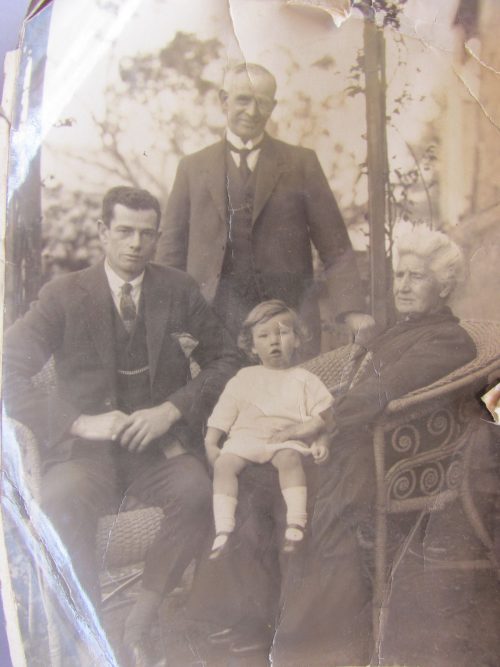
Marriage
W.J Day married Maud Alice Tassell in 1896 and had seven children:
- Harold Linsday Day b 1897 d 1963
- John Leonard Day b 1899
- Frederick William Day b 1903 d 1957
- Grace Melva Day b 1906 d 1998 m Alan Kerr (UK)
- Hazel Millicent Day
- Phyllis Day m Douglas Wilkie
Maud Alice was born in Adelaide and moved with her parents to live in Albany in her teens. His wife, Maud Alice, died at 61 after suffering ill health in November 22, 1938. She was buried in Karrakatta Cemetery, Presbyterian section CC 0249.
W.J Day married his second wife Bessie Mills in a small ceremony in April, 1941.
As Mayor
During his term as Mayor, he had the honour of officially receiving and welcoming His Royal Highness the Prince of Wales (Duke of Windsor), Lord Birdwood and Admiral and Lady Jellicoe and participating in important events.
On November 10, 1918 news of the signing of the armistice in Germany reached Albany and W.J. Day played a major role in the celebrations. When the news was announced all shops and businesses closed and the excited crowds filled the streets. Bands played and school children gathered.
The Mayor (Mr. W. J. Day) mounted a pedestal at noon outside the town hall and was accorded an ovation.
He said: “In a hurried and informal way we meet here this morning to express our gratitude and in some measure mark the close of the greatest and most tragic event in the world’s history – the close of the terrible war – a war that will go down to the ages as the war of the ages, and a war that will have, we trust, the effect of putting an end to war. And this morning, with hearts full of thanksgiving and gratitude, we all join in fervently saying ‘Thank God’ that the long-looked for day – the day of victory – is here, and the arch conspirators against the world’s peace are smashed into impotency for all time.
All of us have fresh in our memories that eventful fourth of August, 1914, when the British nation took the grandest and most momentous step ever taken in its history – the unsheathing of the sword in the cause of liberty and freedom and to protect right against might. We also remember how every branch of the Empire, through its head, dashed out the message to the Motherland that they were in with her to ‘the last man and the last shilling’ – a message that has been carried out in every sense of the words.
We also remember how the Australian Government offered to the Imperial authorities 20,000 men – an offer that was accepted by the home Government, with gratitude and thanks, but which was, in some quarters, treated with contempt and derision. How far that contempt was warranted has time revealed.
We are all proud to know that our Australian soldiers have proved themselves worthy of the best traditions of their forefathers, and carved a name for themselves that will go down to posterity as worthy of the British race. Today we realise that more than three times 20,000 men of Australia’s best will never return to these shores. They have made the great sacrifice and paid the price of our freedom, a fact that should have a restraining effect on us today when celebrating this glorious victory.
Let us, out of respect to the memory of those lads – do nothing unseemly or befitting the occasion. And let us try, collectively and individually to so shape our lives to be, in a measure, worthy of the great sacrifices made on our behalf. Some people will tell you that it is grand to be British today, but I will tell you it is good to be British always, and in lands where the English tongue is seldom heard they will tell you that it is fine to be associated with the British nation. Britain has been responsible for bringing this war to a successful issue. Her determination and bulldog tenacity has time and again rallied the Allies when their spirits were low, which enabled them to fight on till victory was secured.
This war was not a dispute between nations, but the outcome of a deep-laid plot between the Teuton nations, in which they conspired together for years to seize an opportune moment to fall upon an unprepared world and annihilate it at a blow, with a view to forcing their will and their autocracy on the rest of humanity. It was a question as to who should predominate – the Teuton or the Anglo-Saxon, and we are all proud to know that democracy has triumphed. And we are proud of the fact that Australia took her part in attaining this glorious triumph.”
1918 ‘SIGNING OF THE ARMISTICE’, Albany Advertiser (WA : 1897 – 1950), 9 November, p. 3. , viewed 12 Apr 2018, http://nla.gov.au/nla.news-article70136024
W.J Day was also associated with what they believe was Albany’s first real introduction to aviation. Major Norman Brearly, after World War I, brought his Avro airplane to the Albany landing on Shelly Beach in 1919 where W.J Day was one of selected people who went up in the plane. This was part of Major Norman Brearly’s 16 months of doing exhibitions, joy riding, taxi-flights and aerobatics in country centres throughout WA. Brearley went on to form Western Australian Airways LTD in 1921.
As mayor, W.J. Day laid the foundation stone, with Rev Chaplain Milton Maley (Methodist Church), for the Soldiers’ Memorial which stands in York Street adjacent to St John’s Church in the presence of ~2,000 people on Anzac Day, April 25, 1921. A sealed bottle containing the day’s ceremony, a statement of the monument details, a collection of Australian coins struck during the reign of King George V and various press cuttings were place in a cavity hewn in the main stone. The silver trowel used in the ceremony was presented to W.J. Day.
The Soldier’s memorial is 25 ft. 6 in with a base of 5ft x 5ft x 2ft.
Travels
He travelled extensively after serving as Mayor visiting many parts of the World which isn’t something many Australian would have had opportunity to do in the 1920’s and 1930’s. Two of his daughter lived overseas in 1930’s – Melva Day traveled through the UK and Phyllis Day lived in Singapore.
His trips often lasted several months and he shared his travel experiences through newspaper articles and community lectures. He also continued to support the community through his work with numerous local community groups.
His trips included:
- Northern Western Australia and Darwin in 1923
- Singapore 1925
- War Graves Pilgrimage in 1929 – Gallipoli, French and Belgium battlefields, Turkey, United Kingdom
- Easter States and Norfolk Islands in 1935
- Eastern States including Mount Gambier in 1935 and 1939
His participation in the Battlefields and War Graves Pilgrimage in 1929 was unique for the time. It was the first large scale organized visit of Australians to Turkey, the Middle East and the Western Front. The pilgrimage was originally proposed in 1928 but never eventuated. The 1929 pilgrimage was organized by private individuals and the total cost per person was £230 which was a large amount of money for its time. The group composed of 48 women and 38 men from around Australia and included bereaved relatives and people who survived in the war. W.J. Day participated to make inquiries on behalf of parents whose children died during the war.
Death
W. J Day died in 1944 aged 76 and was buried in Albany Memorial Park Cemetery.
Below is a copy of his obituary:
The late Mr. William John Day, who passed to the Great Beyond last week at the age of 76 years, had been a resident of this town for a period of 52 years, and had been one of its finest citizens.
The late Mr. Day was born at Mount Gambier, South Australia, in 1869, having been a son of the late Mr Carl Day, a well-known resident of the Central State. After attending school in his native town, he became apprenticed to the bakery trade in the same place.
On completion of his apprenticeship, he turned his attention for a short time to agricultural pursuits on his father’s farm, but after a couple of years relinquished this occupation in favour of the trade,
He worked for some little time as journeyman, then went to Victoria for the sake of acquiring further experience and to acquaint himself with a knowledge of conditions prevailing in other parts.
In July of 1892 he migrated to Western Australia, his intention being to go to the Goldfields; but, landing at Albany, he came into contact with the late Mr. F. C Greeve, who was conducting a bakery in Stirling Terrace (the same place where his son Mr. Harold Day is now operating), and at the request of that gentleman took up the position of foreman, and for nearly five years the work of the factory was under his supervision. Resigning from this position, he threw him self into the project of building up a similar business, in partnerships with Ma. Phillips. Mr. Day bought out his partner five years later, and carried on the business afterwards with conspicuous success.
He always availed himself of every opportunity to assist in the improvement of the social conditions of the community of which he formed a part, and of the town which he had made his adopted home; but the claims of his rapidly expanding business prevented him from taking an active part in public affairs until 1909, when for the first time he permitted himself to be nominated for a seat on the Municipal Council.
He was then elected as a representative of the East Ward, and until 1917 proved himself worthy of the continued confidence of the ratepayers. In the last-named year he was elected to the Mayoral chair and occupied that honourable position until 1921, and at the conclusion of that period he retired from civic life.
During his term as Mayor, the late Mr. Day had the honour of officially receiving and welcoming His Royal Highness the Prince of Wales (now Duke of Windsor), Lord Birdwood and Admiral and Lady Jellicoe.
After this he travelled extensively, and visited most parts of the world, notable exceptions being China, Japan and South America.
In 1938 he finally gave up business (his son Harold since carrying on) and retired to live quietly.
The deceased was a prominent member of the Masonic fraternity and had received all the honours at the disposal of the local Plantagenet Lodge. He also had the credit of founding the local Court of the Ancient Order of Foresters. He passed through all the chairs and became its oldest Past Chief Ranger.
As an elder of the Presbyterian Church he had a long and active association with the local Church, of which he was a valued member. In his younger days he was an enthusiastic rifleman, and was on the committee of the Albany Club for a lengthy period. He was the possessor of a marksman’s badge of efficiency. He married in 1896, but his wife predeceased him in 1938. Of the union there survive sons Harold (Albany), John and Fred (Perth), and daughters Melva (Mrs. Alan Kerr, Liverpool, England), Phyllis (Mrs. Douglas Wilkie, ex-Malay States, now Perth), and Hazel (Mrs. J. Higgins, Perth).
Deceased remarried in 1941, his second wife being Miss Bessie Mills, of Albany, who also survives him.
The remains were interred in the Presbyterian portion of the Albany Cemetery on Saturday afternoon last, in the presence of a large and representative gathering, the Rev. J. W. Eddleston performing the last rites. The chief mourners were Harold, John and Fred (sons), and Lindsay (eldest grandson).
The pall bearers were: Messrs. L. L. Hill, MLA, and H. Wiley (Plantagenet Lodge), A. G. Hill (Hiram Chapter), C. Carpenter (AOF), Hon. C. H. Wittenoom, Mayor, and Cr. T. H. Nesbitt (Albany Municipal Council. Messrs. Max O’Neill and Alan Harper were present representing the Albany Brass Band. Many beautiful floral tributes were placed on the mound. The funeral arrangements were conducted by Mr. H. C. Prior.
1944 ‘Late W. J. Day.’, Albany Advertiser (WA : 1897 – 1950), 20 July, p. 7. , viewed 22 Jan 2017, http://nla.gov.au/nla.news-article70449770
Joseph Henry Day
Joseph Henry Day, known as Harry, born in 1872 was Emma Jane Day’s third son.
I haven’t located much information on Harry Day other than in June, 1882 Carl Day was charged with neglecting to send him to school when he was 10 as he needed him to earn money to help support the family.
He married Agnes Cook (or Cock) in Mount Gambier on 1 Aug, 1896. The marriage certificate and birth certificates list her last name as Cook but it might be Cock. Her father was either James Cook or James Cock.
Letters sent by my Grandfather Charles Hurst’s to relatives with information on family history said that Harry had been a station manager and one of his son’s was a doctor. He commented that Harry was a wonderful manager of other people but not of himself.
I believe the following is Agnes’s obituary.
OBITUARY. MRS. J. H. DAY.
Great sympathy is felt in the Mypolonga settlement, and in Murray Bridge, with Mr. J. H. Day in his sad bereavement in the loss of his wife. Mrs. Day, who was 42 years of age, was a daughter of the late Mr. Jas. Cook, of Mount Gambier, and was married to Mr. Day twenty years ago. For a time they resided at Mount Gambier, and later at Rendelsham, which place Mr. Day managed for Mr. G. G. Legoe. Later they removed to Salisbury where they resided for 15 months, and took up their residence at Mypolonga in August 1914.
Mr. Day was one of the first to arrive at the new settlement after the blocks had been allotted, and was well satisfied with the prospects before him. The removal of his wife by death has made a great difference to his future as there are six children, three boys and three girls, and Mr. Day feels that he should study their interests by removing to a township.
1916 ‘OBITUARY.’, The Mount Barker Courier and Onkaparinga and Gumeracha Advertiser (SA : 1880 – 1954), 3 March, p. 4. , viewed 14 Nov 2023, http://nla.gov.au/nla.news-article147695529
Mary Daisy Lillian Day
Mary Daisy Lillian Day, known as Daisy, born in 1873 was Emma Jane Day’s oldest daughter. Daisy moved in Albany in May, 1896 where she was employed as a tailoress by Mr A. E Bailey for a number of years.
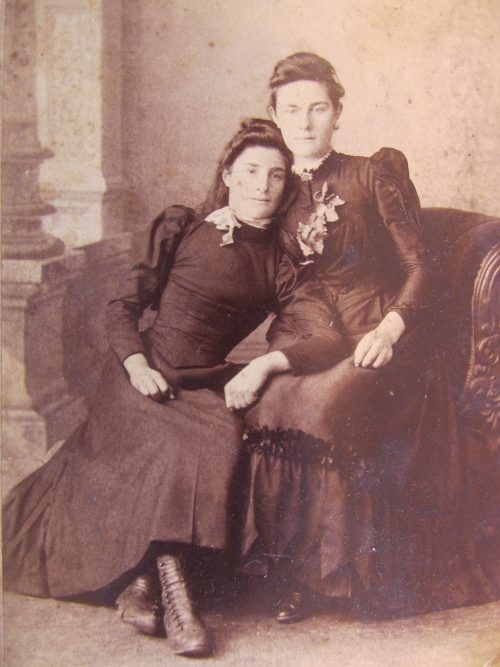
She married Richard Corke Wild in a double wedding at St Paul’s Church, Bridgetown on Dec 30, 1901 with Ern Hill and Molly Day. Millicent Day was bridesmaid and John Day was best man.

Daisy and Richard Wild lived in Albany, Western Australia and had three children:
- Dorothy Kathleen Wild b 1902
- Alick Stuart Gardiner Wild b 10 Aug. 1904
- Kenneth Arthur Wild b
Richard was a livery stable proprietor and carrier.
Richard Corke Wild died on August 3, 1924 aged 58 years when he fell overboard for the steamer Dimboola while sailing from Albany to Port Adelaide as third class passengers. Daisy, Richard and one of their sons was having lunch when Richard felt sick. He went quickly to the rail and overbalanced. The ship had a 7 degree roll caused by ocean swell but the weather was calm.
A lifebuoy was thrown to Richard and within 10 minutes the rescue boat reached the lifebuoy but no trace of him was found.
The voyage was taken as a health trip as Richard had been suffering ill health. Findings was that his death was accidental.
Daisy died in Albany in 1940 when she was 67 and was buried in the Anglican Cemetery.
Millicent Matilda Day
Millicent Matilda Day, known as Millicent or called Did by the family, born in 1875 was Emma Jane Day’s second oldest daughter.
She was originally employed as a monitor at Square Mile Public School from March, 1891 and then at Compton Downs from Dec, 1891. She became a provisional teacher on probation at Furner in Nov, 1893 and was employed as a teacher at Furner in Feb, 1895. She resigned her position as a teacher at Furner Provisional School in June, 1898.
I haven’t located any other information on what she did between resigning from Furner Provisional School in 1898 and migrating to Western Australia. Newspaper articles indicate she migrated to Bridgetown in 1902 however she was bridesmaid at her sister’s weddings in Bridgetown in December, 1901. My assumption is Millicent Day probably migrated to Bridgetown in 1898 soon after she left her teaching job.
E. Day and Co firm was registered by Emma Jane Day and Ernest Hill in 1897. Emma transferred her share of the firm to Millicent Matilda Day in 1904.
Emma Jane and her daughter Millicent lived at Sunnyhurst with Ern and her daughter Molly in Bridgetown, Western Australia.
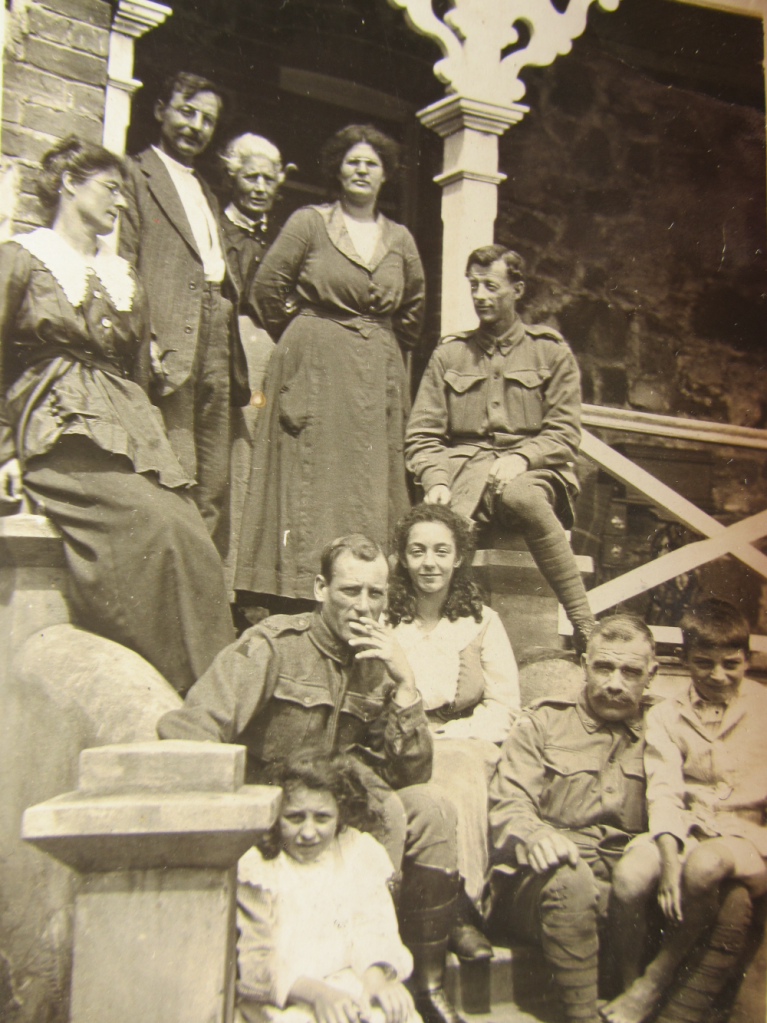
My mother, Millicent Halma (nee Hurst) was named after Millicent.
Millicent travelled from Bridgetown to Sydney twice by rail:
- By herself in 1917.
- With my grandmother Clarice in September, 1924. There are photos from the places they saw on this trip on this page on my site. Photos from the trip with Leonard Mitchell Day’s family are on this page on my site.
Millicent died at 61 on Oct 13, 1936.
Below is her obituary from Blackwood Times:
Bridgetown residents learned with regret on Tuesday morning of the death of Miss Millicent M Day at her home Sunnyhurst, Bridgetown. The late Miss Day who was 61 years of age was born at Mt Gambier, South Australia and came to this State in 1902, working in a business established by her mother. Two years later the late Mrs Day transferred her interests in the business to her daughter and the business was carried on under the name of Day and Co. The late Miss Day was particularly keen business woman and always working on sounds lines made a success of everything that came under her care.
Every movement for the betterment of the district could rely on her support and when it was decided to form a Red Cross Society in the early stages of the war it was to Mrs Day that the secretarial reins were handed. The work carried out by this body was something to be proud of and the hon. secretary always shouldered her full load. For 14 years, 1914-28 she carried out the duties of hon. secretary. In 1919 the members showed their appreciation of her great efforts by presenting her with an illuminated address and a gold cross. After resigning the position she was appointed to the position of treasurer, a position she held at the time of her death. Although she gave up the secretarial position her interest never waned for she was just as keen as ever to join in and help those who were in trouble. Right through her life that grand feeling was always uppermost in her mind, the joy of doing something to make others happy. As a member of St Paul’s Ladies Guild she played a big part being every ready to do her share and for a period was secretary of the Guild. In many other directions the Late Miss Day played a noble part and may there who will miss her great help that was so willing given. In 1929 the members of the sub branch of the RSL showed their appreciation of Miss Day’s unselfish services by presenting her with a certificate of merit and a badge in the shape of a brooch. The late Miss Day was also a member of the Women’s Auxiliary and took great interest in the movement.
For some years she has not enjoyed good health and had to undergo several operations. Until a fortnight ago she was able to remain out of doors. Despite her illness she still thought of others and only a week before her death kindly offered to donate several prizes for the children’s ball being held to raise funds for the hospital.
1936 ‘OBITUARY’, The Blackwood Times (Greenbushes, WA : 1905 – 1955), 16 October, p. 5. , viewed 13 Nov 2023, http://nla.gov.au/nla.news-article266787779
The following are photos of entries from Sheila Hurst’s diary where she discusses that my grandparent’s wedding (Charles Hurst to Clarice Hill) was postponed in 1936 due to Millicent Day’s death.



Mary Gertrude Day
Mary Gertrude Day, known as Molly, born 1877 was Emma Jane’s youngest daughter and my great grandmother. She married my great grandfather Ern Hill in 1901. I don’t know much about my great grandmother Molly. She migrated to Western Australia with her mother Emma Jane Day in 1897 when she was 20. They visited her brother W.J Day in Albany and then spent a few months in Bunbury where they met Ern Hill.
He convinced them to come to Bridgetown in 1898 to start a business together.
My grandfather Charles Hurst describes her in letters to relatives researching family history as shrewd, spoiled and selfish. The family had come far from the struggles of their earlier years in Mount Gambier, becoming notable earlier settlers of Bridgetown and fairly well off financially. My memories of my Aunt Sylvia, Molly’s youngest daughter, was very English, proper. I’m assuming that Molly and Millicent were probably like this.

Leonard Mitchell Day
Leonard Mitchell Day born 19 Feb 1880 was Emma Jane’s youngest son.
Leonard enlisted in the Boer War and below is an excerpt published in the newspaper from a letter he sent in 1901.
Some intelligence has at length arrived of the losses sustained by the Fifth and Sixth West Australian Contingents in South Africa during May. Mr. W J Day, of Albany, has received a letter dated May 22 from his brother, Corporal Leonard Day, of the Fifth, in which he states that the two West Australian Contingents were united at Middleburg afterwards being ordered on to Barberton and Komati Port. The letter goes on to say :- Last Thursday, a week ago tomorrow, we suffered a great defeat. B. Company of the Fifth and Sixth W.A.M.I. were sent out to a couple of farms with two waggons to bring away the women. The Sixth were advance guard, whilst we were guarding a kopje. The Sixth were engaged with the enemy for over an hour and eventually drove them back, but it was only a trap set by the crafty Boer. By this time we were escorting the waggons with the women towards the convoy, the Sixth having followed up the enemy were getting it to warm so were forced to retire. The retreat was hurried and the Boers followed so closely on the Sixth that we (the Fifth) mistook the Boers for Sixth with the result that the enemy were on top of us before we knew where we were. All was confusion and the order was given to retire. On reaching a hill about a mile and a half away a stand was made and the enemy driven back. We had, however, lost two killed (and two have since died of wounds), and four more that were wounded of the Fifth, whilst the Sixth lost five killed and 12 wounded. Several were captured but were released after being stripped. The Boers took the boots and leggings from the dead. Break Pan is the name of the place where our men were killed, and Groblers Rest is where the heroes of the 16th May, 1901, lie sleeping there last long sleep. We were snipped at all day, day after day for a week. We took all the women we had collected into Carolina the other day.
1901 ‘THE WEST AUSTRALIAN REVERSES.’, The Albany Advertiser (WA : 1897 – 1954), 12 July, p. 4. , viewed 21 Nov 2023, http://nla.gov.au/nla.news-article69922643
The following is an excerpt of an article published on the death of R.J Furlong during the Boer War.
Sergt.-Major Day writes as follows’:— ” Carolina, Eastern Transvaal, 2l-2-’02. Mr. Gollan. Sir, — By last mail Trooper Goodwin, of this regiment, received a letter from your good self seeking details concerning the mysterious disappearance of our departed comrade, R. J . Furlong. As I was in the same troop as Furlong was up till he met his sad end, Goodwin asked me to relate as much as possible regarding deceased. On the memorable day that Brakpan was fought (16-5-01) Corporal Furlong and a trooper named Norris (who enlisted at Northam) were sent about five hundred yard on the right of our company to guard against surprise. After journeying from camp, distant some three miles, we halted on a small rise. Immediately below our position was a farm ; this farm was the place we were destined for with two waggons tor the express purpose of destroying all foodstuffs and bringing away the women. By this time the Sixth, who were operating about one-and-a-half miles to our left front, engaged the enemy, or rather were ambushed by a number of Boers concealed in a mealie patch, resulting in the loss of four men. After a severe hit of skirmishing the enemy were driven off. Our troop, under Lieut. Ochiltree, then skirted up the creek and burnt the said mealie patch. No sooner was this done when we noticed the 6th (who following up the enemy were getting it too warm), retire. Lieut. Ochiltree then received an order to fall back on to the remainder of our company in only to cover the 6th, which we did by taking up a position which we abandoned after firing several volleys thinking that the advance of the 6th had by this time taken up position to cover our retirement. We then received the order “Stand to your horses.” This was the last I saw of Furlong. By this time the mealie patch was enveloped in flames, and the Boers availing themselves of the splendid opportunity afforded galloped down in strong force under the cover of the smoke. We had not gone more than 500 yards when we noticed several Boers galloping close behind us. We thinking they were the extreme rear of the 6th, did not realise the seriousness of our position until bullets came thick and fast. It was here that Lieutenant Forrest galloped back with four men, but the enemy was on the rise first, and consequently Forrest, Edwards and Bollinger were killed. The order was given to retire and it was not till reaching a hill further on that we made a stand and drove the enemy off. About five minutes after reaching the latter place I noticed trooper J. Sizer (also a Northam lad and a game soldier) galloping up on Furlong’s horse, which was in a state of exhaustion. On interviewing Sizer he states that his horse was shot from under him, and the only alternative he had was to lay down in the grass and open fire on the approaching enemy. After firing a couple of shots Furlong’s horse galloped past him, which he mounted, but certainly would have fell into the hands of the enemy had it not been that this scene was close to our position. Passing over a period of two months, a brigade of scoots was formed, and A Company of the 6th formed the W.A.M.I. quota. Whilst on this expedition: they captured some Boers, who were in possession of saddles and other sundry belonging whose numbers corresponded with those of the men who were killed on the day in question. So, naturally, a conversation was struck up with the prisoners, informed our men a man was left dead on the field, and judging from the description given to me, I came to the conclusion that it could have been no other person than Corporal R. J. Furlong. A rumor is current at present to the effect Furlong made good his escape, joined another Colonial corps, and died some two months back from the effects of enteric fever. But I might mention that this is almost impossible, in that all the columns working in the vicinity were communicated with by General Walter Kitchener, and no tidings whatever could be heard of Furlong. You also mentioned you thought the men were not too hospitable to him. Well, I am sorry to confess that he anything but popular, owning to his being too strict. Discipline does not work with wild Colonial volunteers. Hoping this reaches you safely, I draw to a close as duty calls Yours truly, Leonard Day, Sergeant-major.
1902 ‘The Fate of Corporal Furlong.’, The Northam Advertiser (WA : 1895 – 1955), 12 April, p. 3. , viewed 21 Nov 2023, http://nla.gov.au/nla.news-article211860360
d 1953
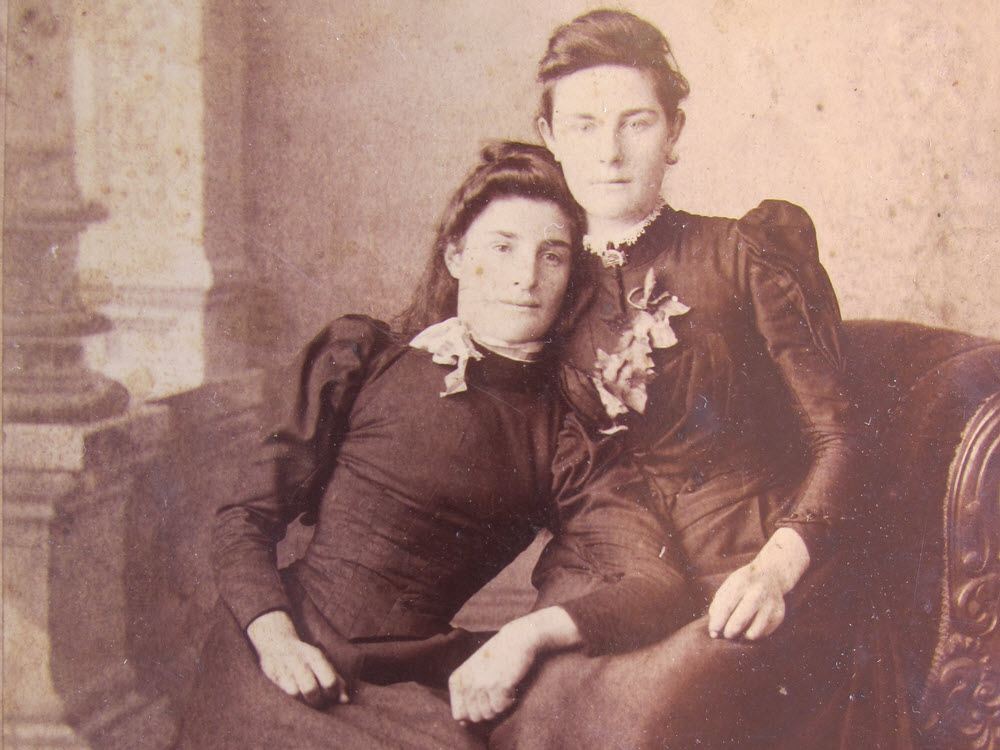




Leave a comment